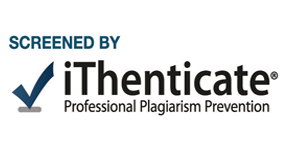Article Title :
Optimizing Landslide Susceptibility Model Using Artificial Neural Network (ANN) Approach in Sawla-Laska Road Corridor and Surroundings, Southwest Ethiopia 
8 (2024)
1-21
Artificial neural network , Landslide Inventory , Natural hazard , Susceptibility Modeling


Natural disasters such as landslides have potential to jeopardize human life and seriously harm ecosystems. Ethiopia is among the countries most susceptible to landslides because of its mountainous terrain, strong and sustained rainfall, and dense development near steep hillsides. This study aimed to produce a landslide susceptibility map for the Sawla-Laska road corridor and its surroundings in Ethiopia using an Artificial Neural Network (ANN) model. The QGIS model builder module was used to intersect 195 landslide polygons and 12 thematic raster pixels for the topographic, hydrological, proximity, geological, and environmental elements. The Generalized Weight (GW) results revealed strong correlations between proximity variables, slope, plane curvature, humicalisols, agricultural areas, settlements, scant vegetation, and barren terrain. In contrast, other factors exhibited negative and neutral interactions. The Receiver Operating Characteristics (ROC) curve showed acceptable results. The accuracy of the model ranges from 88% to 94%. Data were assorted into low, medium, and highly vulnerable zones representing 183.85 (75%), 14.55 (6%), and 47.6 (19.34%). The model performances demonstrate that the model can accurately predict the current situation in the future. Therefore, adequate land-use planning and environmental protection should be implemented based on the findings of this study and landslide susceptibility map.

Landslide susceptibility ANN modeling plays a significant role in natural disasters prevention.
We obtain higher accuracy for the landslide susceptibility map using all conditioning factors.
ROC graph for the susceptibility maps and results show more than 94% prediction accuracy.
The model performances demonstrate that the model can accurately predict the current situation in the future.
Catani, F., 2004. An Inventory-Based Approach to Landslide Susceptibility Assessment and its Application to the Virginio River Basin, Italy. Environmental and Engineering Geoscience, 10(3), 203-216.
Elkadiri, R., Sultan, M., Youssef, A. M., Elbayoumi, T., Chase, R., Bulkhi, A.B. and Al-Katheeri, M. M., 2014. A Remote sensing-based approach for debris-flow susceptibility assessment using artificial neural networks and logistic regression modeling. IEEE Journal of Selected Topics in Applied Earth Observations and Remote Sensing, 7(12), 4818-4835.
Endashaw, D., 2020. Mapping landslide and modelling ps-insar techniques. September.
Haregot, A., Bewketu, H., Tadess, E. and Legesse, F., 2017. Ministry of Mines Geological Survey of Ethiopia Geohazards investigation Directorate Detail Engineering Geological and Geohazard Mapping of Geophysics field and cross section : Addis Ababa, Ethiopia.
Kumar, R., and Anbalagan, R. J., 2016. Landslide susceptibility mapping using analytical hierarchy process (AHP) in Tehri Reservoir Rim region, Uttarakhand. Journal of the Geological Society of India, 87, 271-286.
Melchiorre, C., Matteucci, M., Azzoni, A. and Zanchi, A., 2008. Artificial neural networks and cluster analysis in landslide susceptibility zonation. Geomorphology, 94, 379-400.
Meten, M., 2020. Frequency Ratio Density, Logistic Regression and Weights of Evidence Modelling for Landslide Susceptibility Assessment and Mapping in Yanase and Naka Catchments of Southeast Shikoku, Japan.
Pham, B. T., Tien Bui, D., Pourghasemi, H. R., Indra, P. and Dholakia, M., 2017. Landslide susceptibility assessment in the Uttarakhand area (India) using GIS: a comparison study of prediction capability of naïve bayes, multilayer perceptron neural networks, and functional trees methods. Theor. Appl. Climatol., 128, 255-273.
Woldearegay, K., 2013. Review of the occurrences and influencing factors of landslides in the highlands of Ethiopia : With implications for infrastructural development. Momona Ethiopian Journal of Science (MEJS), 5(1), 3-31.
Wu, T., WH, T. and Einstein, H., 1996. Landslides: investigation and mitigation. Chapter 6-landslide hazard and risk assessment. Transportation Research Board Special Report, 247, 106-118.
Yang, X., Liu, R., Li, L., Yang, M. and Yang, Y., 2020. Landslide susceptibility mapping using machine learning for Wenchuan County, Sichuan province, China. E3S Web of Conferences, 198, 03023.





